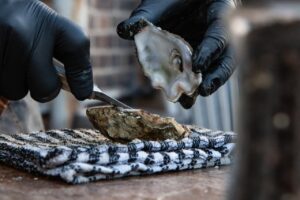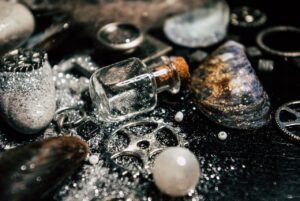
Broome is known as the pearling capital of the world as it was first discovered back in the mid-1800s that the beautiful ‘Mother of Pearl’ came from the coast just off Broome in a place called Roebuck Bay. Once this discovery was made settlement camps soon followed with men and women travelling here to claim their fortune so Broome quickly became a hive of activity but still rugged and in the middle of nowhere. Broome’s pearling industry quickly became interesting to many people as over 400 pearling luggers were sent out every day to the shallow waters of Roebuck Bay. Back when it all began slave labour of the local Aborigines was rife and they were rounded up and used as slaves to dive down to the depths to retrieve the pearls. Many died of starvation, malaria, and malnutrition and others saw untimely deaths with hazards of the sea such as shark attacks, drowning, and the bends. It wasn’t actually the pearl itself that they were after but the mother-of-pearl shell that was highly sought after for cutlery handles and buttons and finding the pearls was just an added bonus.
People from all over the world became very interested in Broome’s pearls and it was in the 1920s that saw the Japanese come in and take control of the pearling industry and luggers. By this time the waters in Roebuck Bay started to become depleted of mother of pearls so they devised a new plan to head to deeper waters to continue the pearling trade. The slave labour and torture of the Aborigines that were kept were finally released as they were no longer needed for the deeper waters where proper diving equipment was to be used. From this point on the pearl luggers were motorised and divers used mechanical air pumps to make the dive. Though come the time of WWII, Broome was bombed and the Japanese divers were interned bringing the pearling industry to a grinding halt. And then came the decline of the pearl buttons seeing the rapid decrease of pearl boats every year, but yet again the magic of the pearl won the hearts of the world and saw the small seaside town of Broome come alive again when pearls were discovered in Kuri Bay.
The Broome pearling industry operates 16 licenses over 12 different companies to dive for pearl oyster stocks for their shell supply and brings in around AUS$200 million each year with its exports and employs more than 1000 people. It is cooperatively managed by the Government and Industry to keep up and maintain this precious resource. Each year the Australian Pearl Industry exports around 320 kan annually (3.75kg = 1kan) to places such as Japan, the USA, Hong Kong, and Europe which are always wanting more of the pure and naturally cultivated Australian pearl. As the Australian pearl is unlike any gemstone or other pearls that you can find, the Australian Pearl is of the highest grade of pearl where it is harvested by hand and then cleaned of sea salt and any other residue it might have and then graded. The purity of Australian pearls never fades and that is why so many are passed down through the ages!
Today you can wander through Chinatown in Broome to discover the colourful past and history of the pearl lugging days where billiard rooms, entertainment houses, and games rooms once stood standing. You can read tales and stories engraved upon the walls of Chinatown and browse through some of the most beautiful pearl showrooms around. There are old but beautifully restored luggers that you can sail on and come on board for the day to learn about how the pearling was once carried out. Broome is a town with many stories and a multicultural past that is just waiting to be shared with you, so come and discover a town that is alive and bustling.

